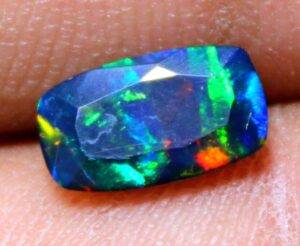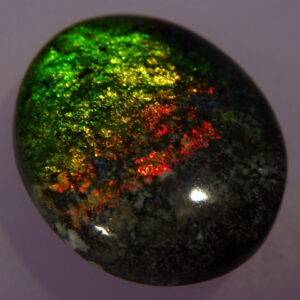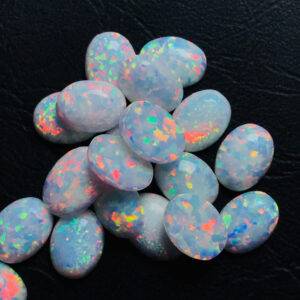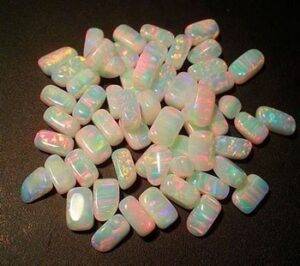Treatments on Opal
As a consumer, It is generally seen that opals have been undergone some treatments to change their appearance and to provide the opal with excellent play of color in low cost. Additionally, it enhances the opal’s luster and clarity by adding resins or adhesives.
Some questions that often comes up in mind, while you are sitting at some gemstone shop or astrologer’s location, is whether
An opal that wish to buy is or isn’t treated ?
Will an opal work in astrology ?
Will an opal retains its fire whole life ?
In a sense, Various Manufacturers alter all opal materials after they are found in the earth in order to prepare them for use in jewelry at a very low price. It includes various opal treatments process that we will discuss below in detail. Natural opal crystals are transformed from their rough crystallographic form into the shapes, outlines, and degrees of polish in the opal stones that we appreciate and wear in jewelry. These steps are and have always been the routine procedures used for manufacturing opal stones. Beyond traditional cutting and polishing, however, opals can often be treated in ways meant to alter their color or clarity.
In addition to enhancing their appearance, the process may also improve (or in some cases diminish) the opal’s play of color. Since, these treatments are not always apparent to the unpracticed eye, and are sometimes difficult to distinguish even by gemologists, it is necessary and legally required for anyone selling a opal (including consumer to consumer trade) to disclose the treatment procedure it may have received.
Non-disclosure of this treatment could cause a person to believe that a particular opal stone was of higher quality naturally and therefore be more valuable than it actually is, which is an unethical approach of selling.
All reputed sellers must disclose the treatment if any performed on the opal stone. An added challenge is that treatments can be permanent, long lasting, or short-lived under normal jewelry use. Treated opals may require special care by their owner.
The following guide will give a short description of common opal treatments processes, some opals for which the process is used, how easy or difficult the treatment is to detect for a trained gemologist, how often the treated opal penetrated in the jewelry trade, and how durable the material is in wearing an opal in daily purpose.
1. DYEING
Information:
Colored Dyes are sometimes used to treat certain types of opals which are naturally quite porous. This treatment can enhance the stone’s color or add color altogether. Introducing colored dyes into porous or fractured opal is used to enhance its play of color and reduces surface roughness due to fractures.
Drawback:
While dyeing can make opals more visually appealing but potentially decreasing their commercial value due to its non durability because dye can fade over time with exposure to light.
How to check whether opal is dyed
Sometimes dyed opals can be identified by a trained eye based on an unnatural or uneven color distribution. However, A microscope or other gemological tools is often necessary to confirm the presence of dye.
2. SUGAR ACID OPAL TREATMENT
Information:
The opal material is shaped and polished, then soaked in a hot, concentrated sugar solution. After the sugar soak, the opal is immersed in a solution of sulfuric acid. The heat and acid cause the sugar to caramelize and turn into a form of carbon. This carbon gets deposited within the opal’s pores.
Drawback:
Sugar acid treatment involves concentrated sulfuric acid, which is a dangerous substance. This process should only be attempted by trained professionals due to the safety hazards.
How to check whether opal is sugar acid treated
Under a microscope, treated opals will show black spots or patches instead of a uniformly dark body.
3. Smoking
Information:
The opal is wrapped in paper or another material and exposed to smoke from a smoldering source. This can be anything from burning paper to specific organic materials chosen for their smoke properties. The smoke particles, particularly fine soot, penetrate the opal’s pores, especially due to the porous nature of hydrophane opals. It is done on porous opals only.
Drawback:
Temperature changes can increase the risk of cracking in smoked opals. Smoking can be a temporary or impermanent method of darkening opals. While it might enhance the appearance initially, the potential for color change, unevenness, and cracking are important factors to consider.
How to check whether opal is smoked.
The color change upon wetting can be a clue that the opal has been smoked. Similar to sugar acid treatment, a jeweler might use a microscope to identify uneven smoke distribution within the opal.
4. POLYMER IMPREGNATION
Information:
The opal is first thoroughly cleaned and dried and placed in a vacuum chamber to remove any air or moisture from within its pores. The chosen liquid polymer is infused into the chamber and allowed to fill the opal’s pores under pressure. Once the opal is saturated with the polymer, it’s subjected to heat or light to cure the polymer, solidifying it within the opal’s structure. The filling materials vary from being solids (a glass) to liquids (oils), in most of the cases.
Drawbacks:
Reduced Value, symmetrical play of color impact, reversibility, maintainence concern are some of the important drawback of impregnated opals. They are often available in the market and playing with the customer belief and trust on the opal stones.
How to check whether opal is impregnated.
The symmetrical play of color formation and closed patches of colors all around the opal stone is the best eye catching trick to detect the genuinity of the opals.
5. SURFACE COATING
Information:
Altering a Opal’s appearance by applying a coloring agent like paint to the back surfaces of Opal (a treatment known as “backing”), or paint applied as a coating to all or a portion of a opal’s surface with the effect of altering the color. The exact application method can vary, but it typically involves depositing a very thin layer of aluminum oxide onto the opal’s surface through a process like chemical vapor deposition.
Drawbacks:
it is oftenly seen that coating could wear away over time or potentially be removed with harsh chemicals leaving behind the rashy and non usable opal gemstone in your jewelry.
How to check whether opal is coated.
When seeing the opal minutely, you will see a coating layer on the surface which separate itself from the backside. It looks like the layer is sticked on the opal.
Note:
The content written above is just for the information purpose. However, treated opals are available in the market in a very low prices approx. 10-80 Rs per carat in wholesale. We do not produce and sell these types of opals at all because treated opal does not work as per astrology and after some time its appearance become rough and loses its shine in the jewelry. You can purchase the premium collection of opals by visiting our shop page.
We guarantee our opals stones to be 100% genuine and authentic and lab test can be done in any of the government authorized laboratories in the world.
Reference: https://www.gemsociety.org/article/opal-treatments/














